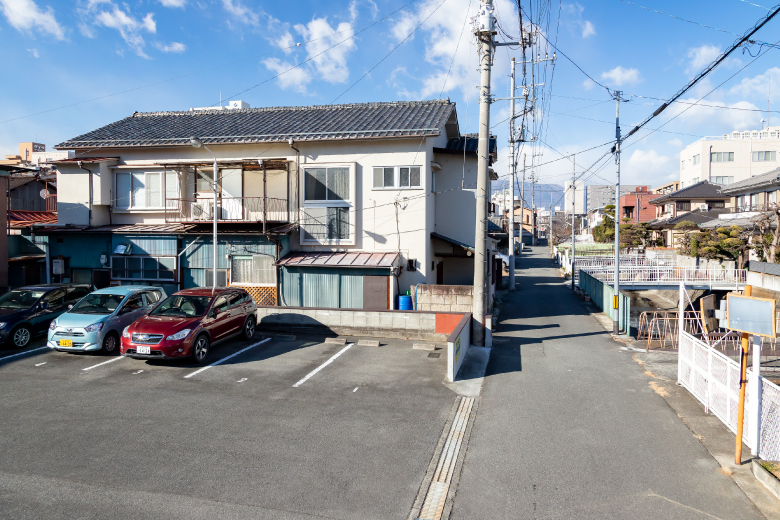Kameya-za was a local theater in the Kofu Region in the Edo Period (1603-1868). A temporary house was built on the grounds of Kotaku-ji Temple by Kameya Yobee in 1764. It was rebuilt in present-day Wakamatsu Town for theatrical plays in 1770. This was the beginning of Kameya-za.
It was a relatively large theater about 20 m wide and about 36 m deep, and the quality of the plays shown is the reason it was included in the “Eight Great Theaters in the Kanto Region.” The 5th generation Ichikawa Danjuro’s (Kabuki actor) first performance outside of Edo took place at this theater, and the superstars of the day such as Sakata Tojuro and Iwai Hanshiro also performed here.
Kabuki and a wide range of other entertainment were performed here in this center of culture in Kofu before spreading to other regions. It was said at the time that “Popular plays in Kofu will become popular in Edo too.” This suggested that people in Kofu had a great appreciation of drama.
In Utagawa Kuniyoshi’s Diagram of Masaki Inari at Ichiren-ji Temple in Koshu, a large building in the background with many flags can be seen. This building is thought to be Kameya-za. In the Records of a Trip to Mount Minobu included in the Records of a Trip to the Koshu Region by Jippensha Ikku, there is a description that evoked Kameya-za.
It was a relatively large theater about 20 m wide and about 36 m deep, and the quality of the plays shown is the reason it was included in the “Eight Great Theaters in the Kanto Region.” The 5th generation Ichikawa Danjuro’s (Kabuki actor) first performance outside of Edo took place at this theater, and the superstars of the day such as Sakata Tojuro and Iwai Hanshiro also performed here.
Kabuki and a wide range of other entertainment were performed here in this center of culture in Kofu before spreading to other regions. It was said at the time that “Popular plays in Kofu will become popular in Edo too.” This suggested that people in Kofu had a great appreciation of drama.
In Utagawa Kuniyoshi’s Diagram of Masaki Inari at Ichiren-ji Temple in Koshu, a large building in the background with many flags can be seen. This building is thought to be Kameya-za. In the Records of a Trip to Mount Minobu included in the Records of a Trip to the Koshu Region by Jippensha Ikku, there is a description that evoked Kameya-za.
